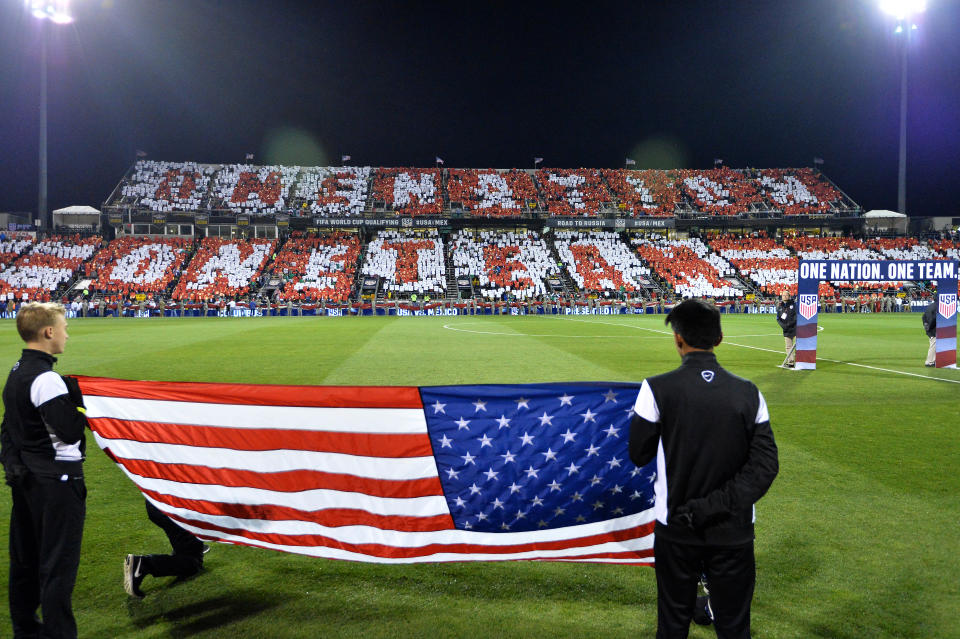We still have no idea what will happen in Saturday's U.S. Soccer presidential election

After four months of incessant campaigning, a small and obscure electorate will vote for a new president of the United States Soccer Federation on Saturday.
And there’s still no telling how it will all play out. Or indeed what its long-term impact will be.
The eight candidates — long-time administrators Carlos Cordeiro and Kathy Carter; former players Eric Wynalda, Hope Solo, Paul Caligiuri and Kyle Martino; and lawyers Steve Gans and Michael Winograd — have pandered and they have toured. They have kissed babies and made campaign promises. They have done endless interviews and spoken to crowds large and small.
Yet even on the eve of this thing, nobody has any idea who will win it. That’s because there’s no way of knowing which way the convoluted constituency — as laid out here — is leaning. Or indeed what its priorities are. After all, the voters are made up of members of the youth game, the amateur game, the pro game, and a smattering of former pros and current and former administrators.
Had it not been for an unfathomable confluence of unlikely outcomes on Oct. 10, this election would hardly have registered to anyone outside the room in Orlando on Saturday. But Honduras twice came back from behind to upset Mexico; Panama came from behind to upset Costa Rica in the 88th minute; and the United States couldn’t undo an own goal and a wonder strike in Trinidad and Tobago. Just like that, unimaginably, the U.S. men will be absent from a World Cup for the first time since 1986.
And, consequently, incumbent president Sunil Gulati went from oft-criticized yet immovable in his position, and a lock for a fourth four-year term, to a man with an untenable position. In the end, he decided to spare himself the first contested presidential race of his three-decade career in U.S. Soccer administration — even though he likely would have won in spite of the World Cup qualifying failure, thanks to a throng of long and strong relationships — and left a gaping hole at the top of the hierarchy.
Only then did this become a competitive election. Whereupon a clown car’s worth of candidates emerged from every nook and cranny of the game to endeavor an attempt at taking the mantle. Nine tried to pass the background and nomination process; eight succeeded.
They have built their elections around different rallying points, ranging from a complete remaking of youth soccer to render it more accessible to the middle- and working class; instituting a meritocracy at the professional level, allowing promotion and relegation between the tiers; and promising financial gender equality between the national team programs.
[ Follow FC Yahoo on Twitter and Facebook ]
Yet all the candidates more or less agree on these things. They emphasize different parts of this unifying platform, but on some level, there is consensus. Since there was never an open debate between the candidates, it’s hard to say what separates them other than their background.
That’s partly because their stump speeches have been long on grand promises and rhetoric but painfully short on actual details. There have been halting attempts at drawing up road maps and blueprints, but those, too, were light on actionable plans.
The trouble with promising to open up the prohibitively expensive youth game at the elite level to those who can’t afford it in its current iteration is that there doesn’t exist a workable alternative. That’s because all the way up to the top of the American game, there’s no compensation mechanism for youth clubs who develop players that make it to the professional ranks — as there is in other countries. That means the money has to come from players in the present, rather than those of the past.
The issue with attempting to open up the pyramid is that while there are inarguably more first division-caliber teams than can reasonably be accommodated in a single league, how do you grant top tier spots when some owners have spent nine figure expansion fees for that right and others have committed nothing to that end at all?
And the problem with closing the wage gap between the national teams is that whereas the men are paid only in bonuses, the women are full-time employees with full benefits. Balancing those inherently different structures would be an accounting nightmare, if not outright impossible given ever-fluctuating results on the field.
What’s more, all of this ignores the fact that the presidency is more of a public post than an executive one. U.S. Soccer has a CEO and a board of directors. The CEO actually manages the place and deals with the business side of things, while the board of directors has to sign off on major decisions. Certainly, the president wields real clout in steering all this, but she or he can hardly do things unilaterally.
At that, it’s likely that the new president will enjoy fewer ways to shape the sport than Gulati did. There is already talk of instituting a committee to make, say, national team head coaching hires — an area where the otherwise overwhelmingly successful Gulati took hard hits to his legacy.
Are the eight candidates cognizant of all this? Probably, for the most part. But that hasn’t stopped them from making promises they might not be able to fulfill.
This has been played up as a cataclysmic election for the future arc of the sport. Yet there’s no reasonable prediction of how it will turn out. Or what its lasting effect will actually be.
The ramifications of this election, whoever wins it, likely won’t be known for a few years yet.
Leander Schaerlaeckens is a Yahoo Sports soccer columnist and a sports communication lecturer at Marist College. Follow him on Twitter @LeanderAlphabet.



